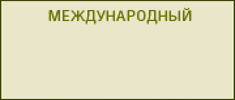List articles
|
Russian multinationals are consolidating their positions among other emerging multinationals
which raises an interest of researchers from both strategic management and international business.
The specificities of their formation and development, the peculiarities of their context attract
attention to different aspects of their business life. The paper aims to consider the notion and elements
of structural configurations of Russian multinationals and identify contingency factors that
influence their combinations. A profound literature review on the topic allowed detecting five key
elements of structural configuration of Russian multinationals which include decentralization of decision-
making, formalization and control, complexity, inter-firm horizontal integration mechanisms
and inter-firm knowledge and expertise transfer mechanisms. The conceptual model developed
in the paper was tested on the sample of 213 Russian multinationals with the use of multiple linear
regression. The analysis showed statistically significant associations between the elements of strategic
orientation, environment and structural configuration of multinationals. As well, it confirmed
significant moderating effect of company’s international orientation on direction and strength of
relationships between key contingency factors and structural elements.
Continue...
|
|
|
The article is primarily concerned with theoretical views of different scientific schools on the topic
of cooperative interactions of industrial enterprises in the form of business associations. Positions
of supporters of New Institutional Economics, Organizational Institutional Theory, theory of social
disruptions, corporatism theory, and theory of meta-organizations are outlined. Based on theoretical
grounds, the hypothesis is put forward which states that cooperative interactions in the form
of business-associations facilitate formation of competitive strategy for development of industrial
enterprises in modern Russia. The clustering of regional offices of Russian Union of Industrialists
and Entrepreneurs (RUIE) is performed using Jieng’s method of head/tail breaks for samples with
heavy tailed distribution, which is the case in Russia. With the use of nonparametric Kruskal-Wallis
test, the stated hypothesis is accepted and Dunn’s test is used to show the particular groups that
have a significant differences. Classification of regional offices of RUIE by is made and the difference
between parameters that characterize development of industrial enterprises within the
groups is shown (capital assets put into operation, technology innovations costs spent, number of
production technologies created, foreign investments). Recommendations for managers of industrial
enterprises are given, the avenues for further research are delineated as well.
Continue...
|
|
|
The article reveals the difference of tactical and strategic competitive behavior of firms. The author
describes the system of tactical management of competitive actions of firms, distinguishes tactical
competitive operations and tactical models of competitive action. The author emphasizes the
relationship between planning of tactical operations, the balance of competitive forces between
tactical rivals, and the definition of tactical competitive advantages and disadvantages of the competing
firms.
The author reveals the content of tactical competitive dispositions, including development of tactical
operations and organizational scenario of competitive behavior of firms.
Also the author identifies and describes the components of management of tactical operations:
an organizational and motivational conditions, operational control of tactical operations, and determination
of the degree of sustainability of competitive action.
Continue...
|
|
|
This article reveals the reason for specific way of competition law enforcement in markets defined
within the context of interrelation between the main and derivative products. Identifying particularities
of grounds for aftermarkets definition we provide systematization of various types of interrelations
between main product and derivative product taking into account possible cases for two
related markets and single one in product boundaries; competition and monopolization of single
market, both markets or one of them. The set of competition restrictions problems within the «main
product — derivative (supplementary) product» relationship is defined on the basis of studies in the
New Institutional Economic theory taking into account the contracting between producers (sellers)
and buyers of products mentioned. It is explained significance of such aspects of interrelations
between buyers and sellers of complex durable goods as fundamental transformation, switching
cost, hold up, contracts incompleteness. Based on lessons learned from «Kodak» and some other
cases the issue of limits for efficient antitrust enforcement is discussed. The problem of excessive
antitrust enforcement as an substitute of contracts design by private actors demonstrate the risk of
crowding out of private ordering of contracts by public ones. The article shows some signs of specific
vector of Russian antimonopoly law enforcement related to aftermarkets issues. It is discussed
particular case of product boundaries definition of market (stripes for tests to check quantity of
sugar in blood) and wider classification of interrelations between the main and derivative products
taking into account not only individual market dominance but also collective market dominance.
Continue...
|
|
|
The article is devoted to the manifestations of monopoly in the insurance market of the Russian
Federation. Analyzed historical moments of presence state and commercial monopolies in various
stages of development of the Russian insurance market. At the present stage proved the existence
of a «niche» (local) monopoly. Identified and described its types: channel monopoly, the
species of monopoly, geographic and consumer monopoly. The presence of channel monopoly
proven in sales of insurance services through airlines, online travel agencies, tour operators. Species
monopoly is described in two directions: innovative species monopoly and factor species the
monopoly. Formulated especially geographic and consumer monopoly in the insurance market.
Presents an assessment of the further development of «niche» monopoly in the insurance market.
It is shown that at the present stage of development of the Russian insurance market has given way
to the traditional monopoly of «niche» monopoly, which the Russian insurance market is shown
in the form of a monopoly channel, species and product monopoly, geographical monopolies.
Continue...
|
|
|
В работе описаны условия повышения доходности четырех стандартных для мировой практики моделей
аукциона — английского аукциона, аукциона второй цены (аукциона Викри), аукциона закрытых ставок и голландского аукциона. Кроме того, исследован ряд специальных моделей многообъектных аукционов, разработанных зарубежными исследователями для случаев одновременной продажи нескольких объектов: аукцион
универсальной цены, аукцион «Заплати свою ставку», многообъектный аукцион Викри, иерархический
аукцион пакетных ставок, механизм Викри–Кларка–Гровса, одновременные возрастающие аукционы, аукцион Аузубеля, прокси-аукцион Аузубеля, Крэмтона и Милгрома и аукцион смешанных товаров Клемперера.
По результатам анализа преимуществ и недостатков существующих моделей стандартных и многообъектных
аукционов автором разработана и предложена новая модель аукциона, который представляет собой симбиоз
английского аукциона, аукциона закрытых ставок и аукциона Викри, предполагает заключение контрактов
на основе ставок конкурентов и обеспечивает более высокий ожидаемый доход аукционисту. Рассмотрены
преимущества в доходности предложенной модели аукциона по сравнению со стандартными моделями
аукционов.
Разработанная автором модель аукциона может найти успешное применение при формировании заказчика-
ми правил конкурентных закупок в рамках реализации Федерального закона от 18 июля 2011 г. № 223‑ФЗ
«О закупках товаров, работ, услуг отдельными видами юридических лиц», а также при доработке законодателем правил конкурентных закупок, предусмотренных Федеральным законом от 5 апреля 2013 г. № 44‑ФЗ
«О контрактной системе в сфере закупок товаров, работ, услуг для обеспечения государственных и муниципальных нужд».
Continue...
|



